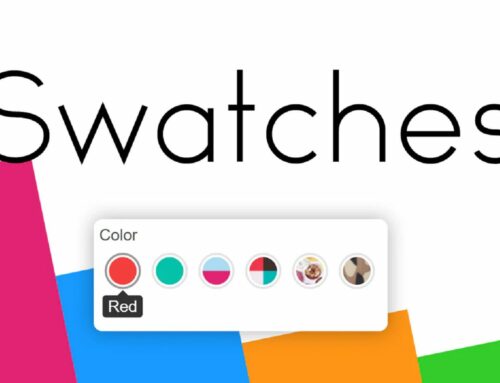Going multichannel allows you to reach out to a broader range of prospects, increase revenue, and broaden your brand’s reach. Running an e-commerce retail store is difficult, but expanding your business to different sales channels makes it even more difficult. However, Shopify Plus inventory management can help you there!
Specifically, Shopify adds an inventory management feature to Shopify Plus, but is it enough to meet all of your requirements? Find out what inventory issues you could be having and which integrations might make Shopify Plus the best option for you.
As you transition to multichannel sales, you’ll undoubtedly run into some of the most typical issues related to channel-specific inventory management.
Let’s dive into some typical inventory issues and possible solutions to get you started.
Contents
Shopify Multichannel Inventory Problems
Before getting into the multichannel inventory problems, we should look at what multichannel is. Many people confuse multichannel and omnichannel and think they are synonymous. In fact, the terms “multichannel” and “omnichannel” are not interchangeable. Omnichannel entails using many channels, resulting in an entirely different customer experience.

We can simply distinguish them:
- Multichannel: Channels aren’t always integrated, and customer engagement is frequently separated.
- Omnichannel: All channels are linked together to provide a consistent customer experience.
After having a clear vision of multichannel, let’s get back to the main topic:
Out-of-stock items
Two common Shopify inventory management problems faced by businesses are overselling and overstocking.
Out-of-stock items cost retailers $634 billion each year. Phantom stock or stock advertised as available at a storage location inside a significant contributor is the absence of an inventory system. This problem could be due to a typo, an incorrect entry, or a lack of tools.
When you promote a low-in-stock product, the lack of software to synchronize sales across all channels becomes an even bigger problem. Items could sell out on multiple channels, forcing you to cancel orders or suffer other stockout impacts.
Each year, overstocks cost the retail industry $471.9 billion in lost sales. This is almost often attributable to a lack of inventory planning. For example, sellers may overestimate predicted sales volume, resulting in higher inventory carrying costs and less warehouse capacity for newer, more profitable items.
Another common problem is when sellers offer a fraction of their product to avoid overselling on one channel and the rest on another. When a channel displays “out of stock” too soon, it misses prospective sales.
The almost $2 trillion expenses associated with inventory mismanagement are primarily hidden costs like overstocks, out-of-stocks, and avoidable returns.
- Overstocks (e.g., too much inventory): $471 billion
- Out-of-stock items (e.g., not enough inventory): $634 billion
- Preventable returns (e.g., shipping the wrong item): $642 billion
Inefficient use of warehouse space & tools

Many companies will split their inventory over various fulfillment centers to maximize omnichannel fulfillment coverage and speedy shipping on all distribution avenues. However, if you don’t know how to do it properly, you could have higher shipping prices, longer delivery times, and split shipments if you send a single order to multiple warehouses.
To manage logistics, 55% of e-commerce businesses still utilize pen-and-paper methods. Inventory opacity, erroneous or nonexistent demand predictions, and a lack of automation, according to research, obstruct multi channel fulfillment in the following ways:
- Inventory visibility across stores, warehouses, and vendors is a problem for 28% of businesses.
- Only 34% of businesses have the software integrations they require.
- Order management, inventory management, point-of-sale (POS), and third-party logistics (3PL) software are lacking in 38%of businesses.
Read more: Shopify Warehouse Management: Business “Secret” To Streamline Logistics
Lack of forecasting
Data quality issues have a cascading effect. And, because business is constantly changing, it’s especially tough to go back if inventory forecasting goes awry in e-commerce.
It doesn’t help that, according to a Zentail poll, 54% of sellers still don’t have forecasting tools and have to generate shifting targets manually. Those sellers frequently use a standard forecasting model of 30, 60, or 90 days. They don’t have consolidated, real-time data to spot new purchase patterns and reorder (or throttle back) on the fly.
High order defect rate (ODR)
Canceled orders, wrong shipments, delivery exceptions, and late deliveries can result from a lack of inventory control. Your selling performance will suffer if these get out of hand. An ODR of more than 1% on Amazon is grounds for suspension.
The threshold is set at 2% on eBay and Walmart. In addition to understocking and poor data quality, an inventory storage system that fails to connect your various warehouses might suffocate your productivity.
Miss out on sales trends

For your multi-channel business, your sales data can provide valuable insights. It might assist you in adjusting techniques that will help you make better inventory management selections by reviewing them.
For example, during holidays, the sale of celebratory attire spikes, while pharma stores refill flu drugs in enormous quantities during the monsoons. In this case, inventory management is essential to overcome these operational stumbling blocks. Fortunately, you can solve these issues with the right inventory management technology, and your multichannel e-commerce sales can skyrocket.
How Shopify Plus Inventory Management Can Help Solve These Problems
Organize your products
The first step in keeping track of inventory, orders, and stock levels is entering your products into the Shopify Plus inventory management dashboard. You’ll need to give each product a different name and a barcode. For instance, you can use an existing barcode or design one from scratch. Also, barcodes will be the system’s unique identifier for tracking products.
To make the most of your inventory management, think about how you’ll analyze sales and what data you’ll need for forecasting in the future, and categorize your products correctly. Specifically, you can distinguish products by category, type, season, vendor, and other factors.
Moreover, you’ll be able to categorize your products and run reports that offer you the information you need and are simple to evaluate if you properly organize your products from the start.
Building many versions of a single product may be necessary to better manage and report on your products (think a shirt comes in six colors and four sizes). Each version can have its own SKU, price, weight, and quantity. You can report on a single SKU or an entire category by creating product variations.
Track stock levels
Tracking and maintaining inventory levels is essential to any inventory management system to avoid stockouts and potential missed revenues. The Shopify Plus inventory management keeps track of stock counts as they pass through the commerce platform.
Create automated alerts when a count reaches a threshold to be more proactive. You’ll be notified when an item runs short without waiting for a report. These notifications can trigger purchase orders or manufacturing, ensuring additional stock is available before running out.
Furthermore, regarding B2B e-commerce, Shopify Plus supports you in managing your B2B and DTC orders, inventory, and customers in one central place. Thus, sharing inventory data across your stores helps reduce operations costs.

Shopify Plus Inventory Management help to optimize demand forecasting
Improved inventory visibility also allows firms to track their inventory turnover ratio better, an essential indicator for determining a company’s health. Product pricing adjustments and future restocking decisions are based on this information, which improves profitability.
Inventory that turns rapidly doesn’t tie up your working capital or take up valuable warehouse space. You’ll need to know how much-needed merchandise is and where to allocate it if you don’t have the correct inventory balance.
With Shopify Plus inventory management, you can run reports to examine how your products perform because the inventory management system monitors inventory, orders, and sales.
In addition, you may quickly filter your products using product classifications to evaluate them in various ways, allowing you to gain a deeper insight into your company, possibilities, and future needs.
Easily integrate with an inventory management system
Ideally, Shopify Plus is compatible with many third-party systems to enhance inventory management.
Firstly, Shopify Fulfillment Network (SFN) is a third-party logistics provider (third-party logistics provider) integrated with your Shopify Plus commerce platform. It provides an end-to-end multichannel inventory management solution that helps you get orders to your consumers swiftly and efficiently.
Best Shopify Fulfillment Apps To Increase Customer’s Experience
Secondly, full-service 3PLs like ours ensure you have the appropriate item at the right location with a countrywide network of strategically located fulfillment facilities, allowing orders to ship faster and for less money.
Thirdly, SFN offers AI-powered inventory intelligence to businesses, recommending where you should place inventory. It integrates effortlessly with your existing systems, allowing for a branded experience and same-day delivery.
As a result, Shopify Plus inventory management is an ideal option among e-commerce platforms. It has advanced features to support inventory management and gives a massive list of third-party systems.
Find out more Shopify Plus benefits and how it can meet your demands HERE.

Is It Enough When Managing Inventory with Shopify Plus?
Your inventory demands become more complex as your firm grows, as you introduce new products, start selling through new channels, or expand abroad. Shopify Plus inventory management will sometimes not suffice. To run your business at scale, you’ll need to upgrade to a robust inventory management solution with additional functionality.
The following are industry best practices that aren’t available in Shopify Plus inventory management:
Limitations in omnichannel inventory
If you sell something that doesn’t go through the Shopify Plus system, you won’t be able to see it in your inventory management system unless you manually enter it. This problem means you’ll never have real-time inventory visibility and will be at serious risk of overselling things you can’t fulfill.
Can not sort multi-location/multi-vendor order
It might be difficult and expensive to orchestrate and fulfill orders containing multiple products if they are stored across multiple warehouses. Also, Shopify Plus inventory management cannot define rules for determining which warehouse a product shipment originates from. Hence, you may pay to ship a product across the country. Especially when it is also available at a nearby warehouse or shipping from multiple warehouses to fulfill a single order will increase shipping costs.
Do not offer product information management (PIM)

Source: Factory.dev
Although you can use Shopify Plus to manage inventory, it is not a PIM. The Shopify Plus item master merely stores data for the website. Thus, it isn’t a robust item master and won’t act as an automated tool. Any changes to an item’s price or description must be manually updated in the Shopify Plus item master, the inventory record, and any other system. This adds to the workload and raises the possibility of errors and inaccuracies.
Additionally, understanding demand is an essential component of an inventory management system because it allows you to produce the proper amount of merchandise. Because Shopify Plus inventory management lacks a demand planning feature, you’ll have to run and export an inventory report before uploading it to a demand planning service or manually calculating demand on a spreadsheet.
Do you want to take your online store to the next level? Shopify Plus is the ultimate solution for high-volume and fast-growing merchants who need a scalable and customizable platform. BSS Commerce’s Shopify Plus development services can help you design, build, and optimize your Shopify Plus store with our expert team and proven strategies.
02 Types Of Automated Shopify Plus Inventory Management Solutions
While the software is the most reliable method for managing multichannel inventory, not all software is made equal. Some systems are less expensive and have fewer capabilities, while others are designed to enable end-to-end processes. A lot of the time, you get what you pay for.

Wondering about choosing inventory or warehouse management systems? Check out Shopify Warehouse Management: Business “Secret” To Streamline Logistics
Basic solution
Small and medium-sized enterprises can benefit from several free or low-cost options. These are frequently hosted in the cloud. Some Shopify Plus inventory management systems, such as drop shippers, are designed for specific business types and only function with a few channels. Standard features are automatic stock updates, order tracking, and alerts when an item runs low on stock. Many also provide rudimentary sales reports or cost analyses.
Advanced solution
Multichannel inventory management solutions with robust integration capabilities can work with a wide range of sales channels, services, and software. They’re more expandable and adaptable to your company’s requirements.
While they give versatile inventory management solutions, they also offer a variety of other tools to help you optimize your product data, listings, pricing, and other operations. They work well with 3PLs, who can use your software’s data to pick, pack, and send things as quickly as feasible.
Generally, pricing for multichannel inventory management systems can range from free to thousands of dollars per month. The price of the software fluctuates based on its capability and scalability. Depending on your order volume, SKU count, or several integrations, some systems may charge additional costs. Keep looking out for hidden expenses and consider which features are most important for growth.
No matter what type of third-party system you want to integrate with your store, BSS Commerce Shopify can assist you in extending the capabilities of your Shopify/ Shopify Plus store by integrating third-party systems. BSS also seeks to provide a consistent and smooth e-commerce experience that adds value to businesses and customers. Go to our Shopify Plus Web Development service to streamline your inventory management with powerful inventory management system integrations.

Conclusion: Is Shopify Plus Inventory Management Good?
Multichannel sales have given brands, retailers, and distributors better opportunities, and many have begun to commit to it. However, merchants tend to give up and deny its benefits when inventory concerns arise. As a result, the only option to address the industry’s most pressing difficulty is to master Shopify Plus inventory management and become operationally efficient.
Moreover, instead of experimenting with separate systems for different functions, a comprehensive e-commerce platform is a preferable option. Ideally, it would help if you relied on a combination of Shopify Plus and PIM or ERP integration. Innovative inventory management is included in a multichannel e-commerce management solution, allowing you to focus on boosting sales rather than wasting resources on inventory management.
Don’t waste your traffic; turn it to profit by Top Shopify Affiliate Program: Turning Traffic Into Profit [Must Read].




